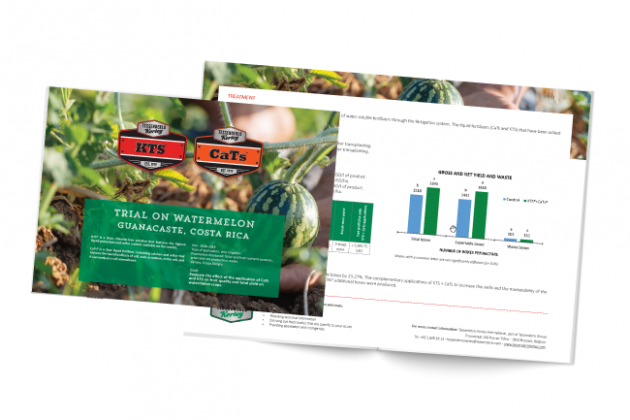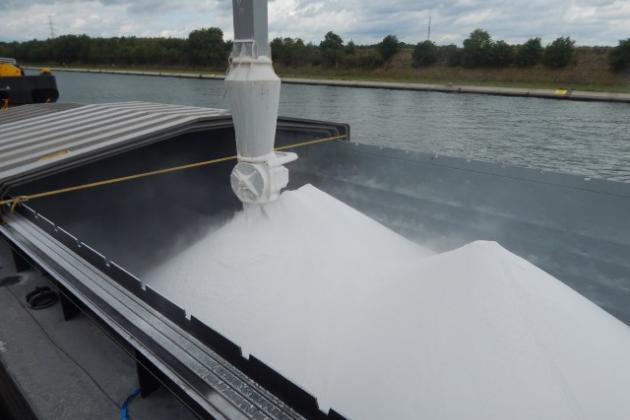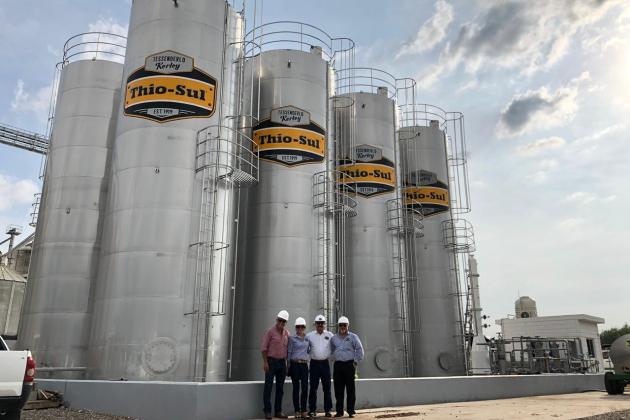
CaTs®
CaTs® is a neutral to basic, chloride-free, clear solution, containing 6 % calcium (Ca w/w) and 10 % sulfur (S w/w). A liter of CaTs® contains 75 grams of calcium (Ca) and 125 grams of sulfur (S) in the thiosulfate form. It can be applied to a wide variety of crops.
Benefits
- Improves firmness of fruits and vegetables thus reducing bruising
- Improves cell structure and plant strength
- Increases yield and shelf life
- Provides quickly available and extended release sulfur
- Improves phosphorus and micronutrient availability and uptake by the crop
- Conditions the soil allowing better water infiltration
- Leaches out harmful salts such as sodium
CaTs® may be applied by drip, micro-sprinkler, sprinkler, flood irrigation, pivot system, surface broadcast, banded or watered in. It may be blended with other fertilizers or applied as a foliar treatment on selected crops. The calcium requirement for most crops increases during periods of rapid growth and early fruit development and CaTs® is the ideal solution for providing both calcium and sulfur in a readily available liquid form to crops. As a soil amendment, CaTs® may be used to improve water infiltration and aid in the leaching of harmful salts.
Get the answers you need to product information, field trial results, blend testing, application tips and more. Find and contact your local expert in your region.
Contact us




